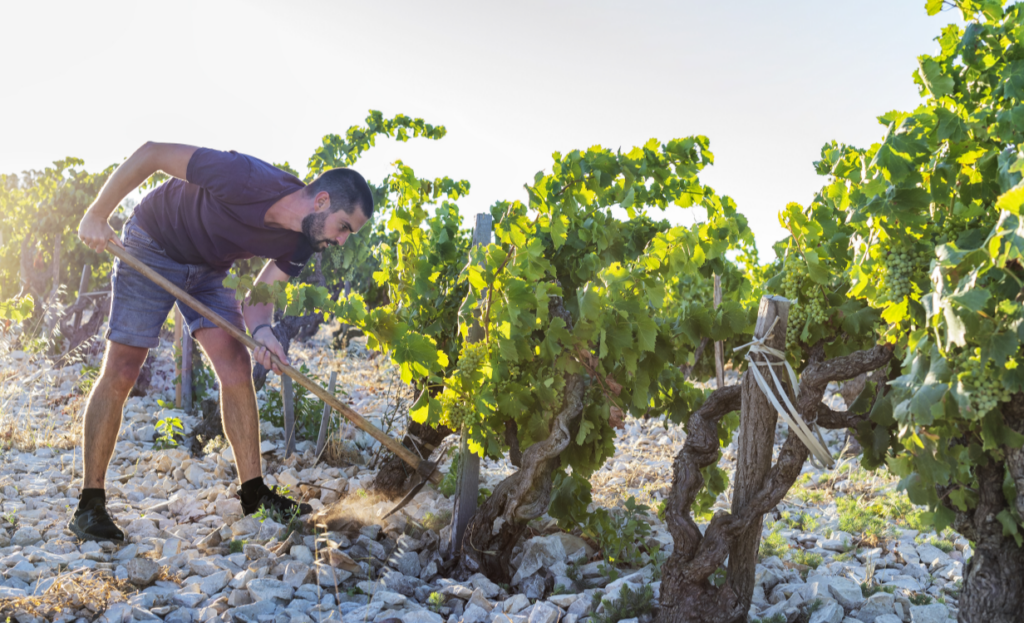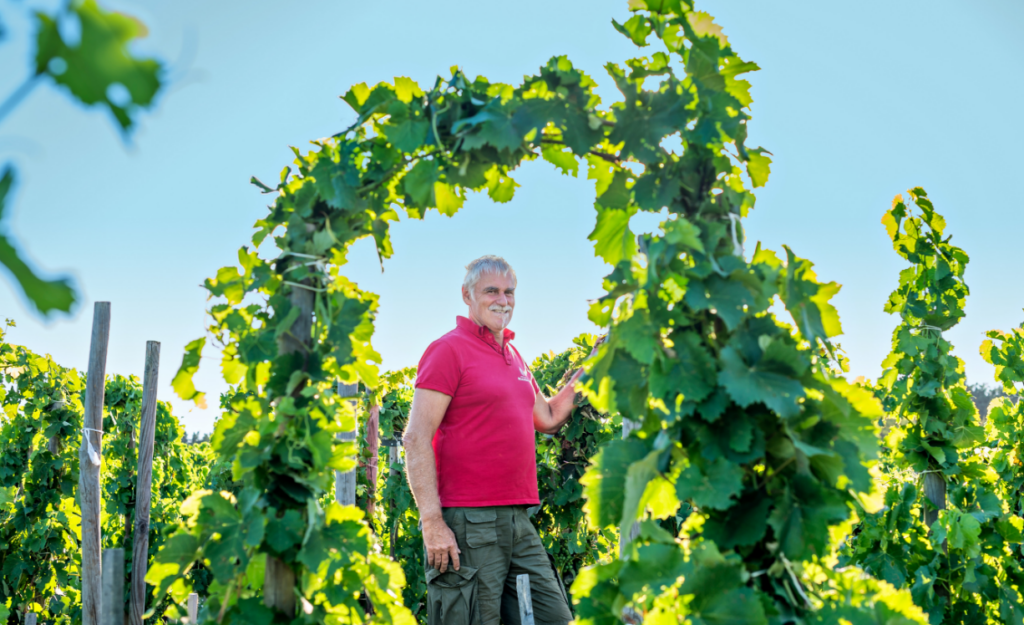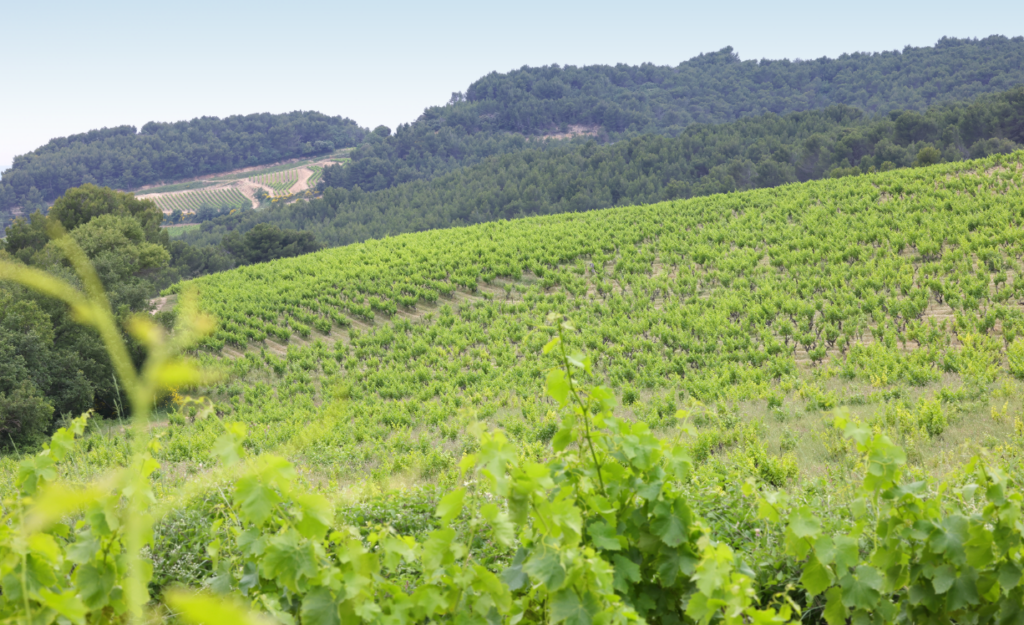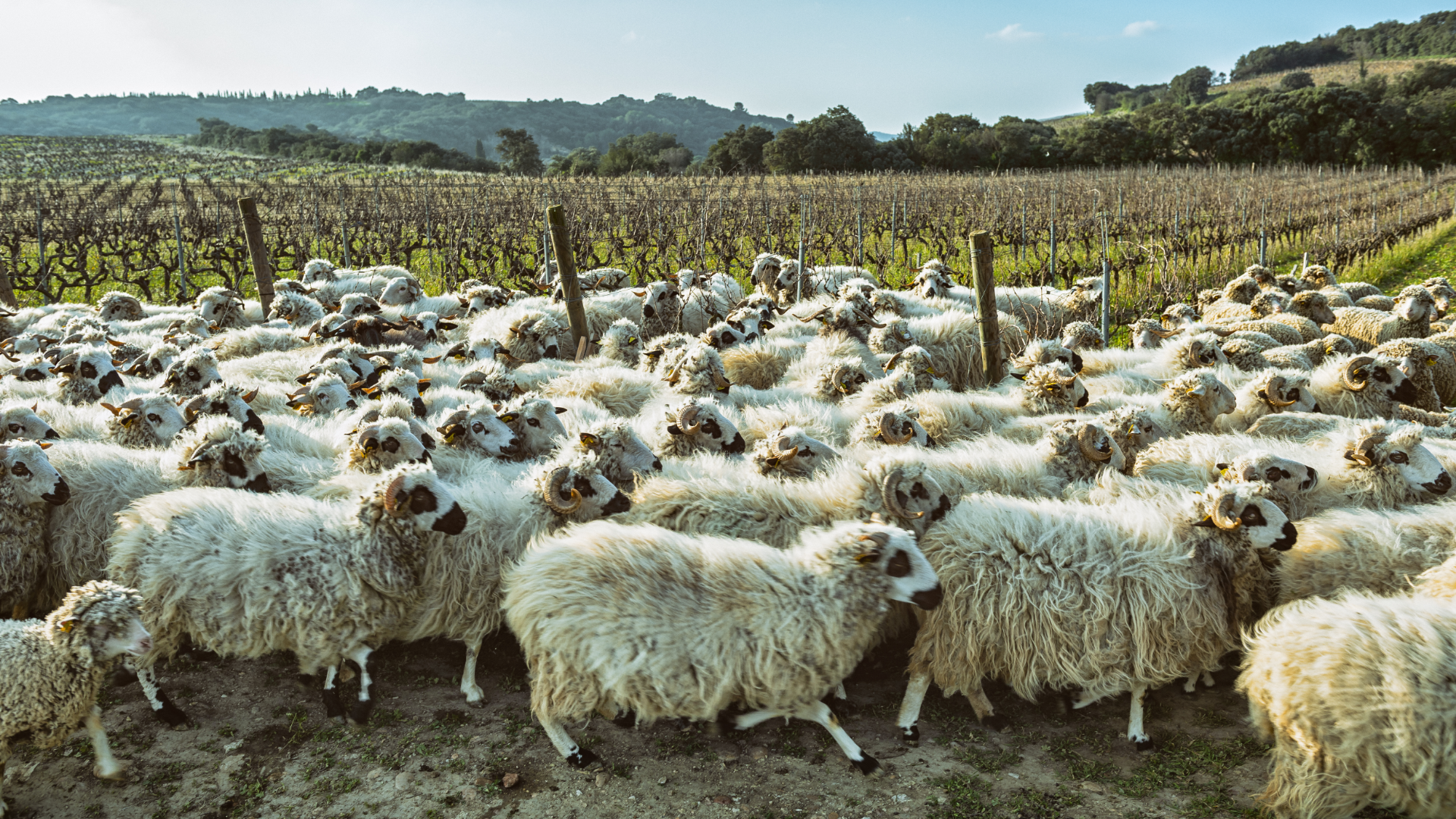OUR LAND

Châteauneuf-du-Pape
It began with a parcel known as Bois Reynard (which in time became Beaurenard) situated in the north-west part of the Châteauneuf-du-Pape appellation, on white limestone slopes facing the Rhone.
Since then, 43 other terroir plots have added their diversity to the estate, with soils that fall broadly into four main pedological types: limestone that confers length and vibrancy, sand that offers great finesse, and round pebbles and red sandstone that give palate pleasing complexity and depth.
The work of observation is constant in each parcel, with each gesture being adapted to every plot in a personalized, made-to-measure approach. The blustering Mistral is ever present, keeping the vines healthy all year long, sculpting the landscape, setting the rhythm.
In the heart of the village, opposite the family property, the private conservatory of the Coulon family displays its precious treasure. Thirteen densely planted grape varieties in a shining example of a reserve of diversity that reflects ancestral skills, perfectly illustrated by old vines such as at Cabrières where red and white varieties were cleft grafted in the field in 1920.


Rasteau and
Côtes du Rhône
The land at Rasteau, further north, was acquired by the family in 1980. Staggered hillsides on the parcels known as Pisan and Pas du Meunier form a world of beige, blue, yellow, and pink clays over 25 hectares of unspoilt nature that can be categorized into 16 types of terroir.
These vines sit on terraces bathed in sun facing the famous Dentelles de Montmirail hills, between woods of holm and deciduous oaks scattered with cistus flowers, where buzzards, eagles and other birds of prey freely soar.
The parcels of Côtes du Rhône to the north of Orange, on the edge of the forest-clad hills of Uchaux, offer a green amphitheater of well-draining gravel, in a magnificent, preserved environment.

Our work
In the mid-eighties, Régine Coulon, who was interested in natural remedies, favored a holistic, global approach to the world, and naturally her husband Paul and her sons Daniel and Frédéric applied this same concept in the vineyard. After experimenting, undertaking trials, and observing their vines for more than twenty years, it was self-evident for them to seek organic (Ecocert) and biodynamic (Demeter) certification, a process they began in 2007.
Soft pruning that respects the flow of the sap, accompanied by the Mistral wind all through the winter, characterizes the viticultural landscape at Domaine de Beauregard until the first days of spring.
The vines are directly grafted in the parcel, to induce strong root growth and extend the life of the vine. All the grape varieties are mixed – red and white together – to offer a deeper expression of their terroirs.
The soils under the row are tilled by hand, by horse traction and mechanical inter-vine hoes, and each parcel has its own cover crops for more than 6 months. In the spring this vegetation is mown, and progressively develops into a rich mulch that protects the soil and its inhabitants from the scorching rays of the sun.
The regular application of organic matter, spraying of plant infusions, essential oils, or oligo-elements also form part of the meticulous care with which the vines are tended.
These are all intangibles that link the plant to its place of origin, and these practices, this philosophy, intensify the beauty and the flavor of the grapes that are picked by hand. Here Grenache has the taste of an old variety of apricot, the Cinsault is floral and powdery, and the Picardon is delicate and finely honed.




